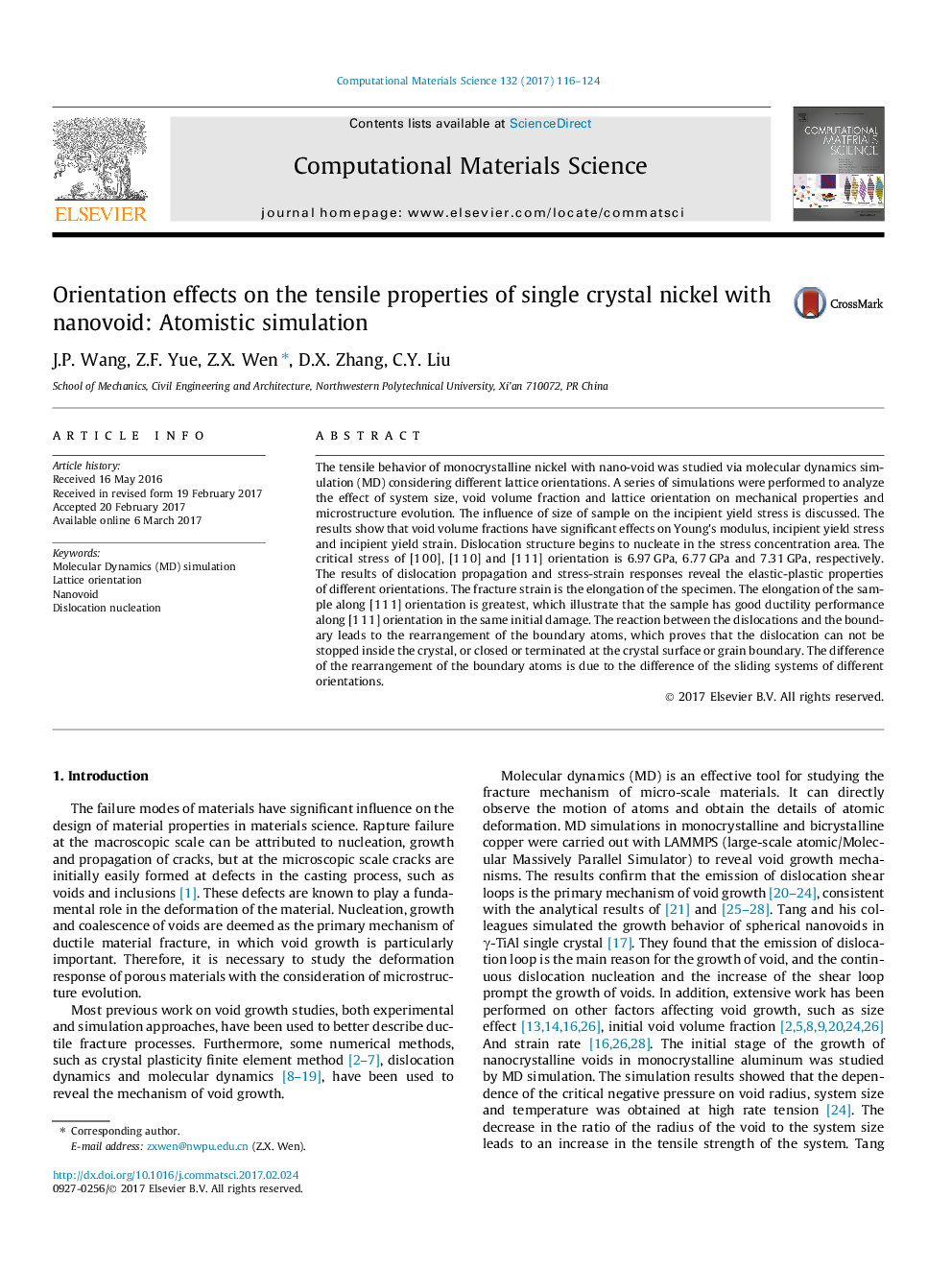| Article ID | Journal | Published Year | Pages | File Type |
|---|---|---|---|---|
| 5453641 | Computational Materials Science | 2017 | 9 Pages |
â¢Uniaxial tension of single crystal nickel with Nanovoid were studied via atomistic simulation.â¢Simulations were performed to analyze system size effect, void volume fraction effect and orientation effect on stress distribution, topographic of dislocation.â¢Dislocation structure initially start to nucleate at the field of stress concentration.â¢Dislocation morphology consequents conformed that Dislocations do not terminate within the crystal.
The tensile behavior of monocrystalline nickel with nano-void was studied via molecular dynamics simulation (MD) considering different lattice orientations. A series of simulations were performed to analyze the effect of system size, void volume fraction and lattice orientation on mechanical properties and microstructure evolution. The influence of size of sample on the incipient yield stress is discussed. The results show that void volume fractions have significant effects on Young's modulus, incipient yield stress and incipient yield strain. Dislocation structure begins to nucleate in the stress concentration area. The critical stress of [1Â 0Â 0], [1Â 1Â 0] and [1Â 1Â 1] orientation is 6.97Â GPa, 6.77Â GPa and 7.31Â GPa, respectively. The results of dislocation propagation and stress-strain responses reveal the elastic-plastic properties of different orientations. The fracture strain is the elongation of the specimen. The elongation of the sample along [1Â 1Â 1] orientation is greatest, which illustrate that the sample has good ductility performance along [1Â 1Â 1] orientation in the same initial damage. The reaction between the dislocations and the boundary leads to the rearrangement of the boundary atoms, which proves that the dislocation can not be stopped inside the crystal, or closed or terminated at the crystal surface or grain boundary. The difference of the rearrangement of the boundary atoms is due to the difference of the sliding systems of different orientations.
Graphical abstractDownload high-res image (197KB)Download full-size image
